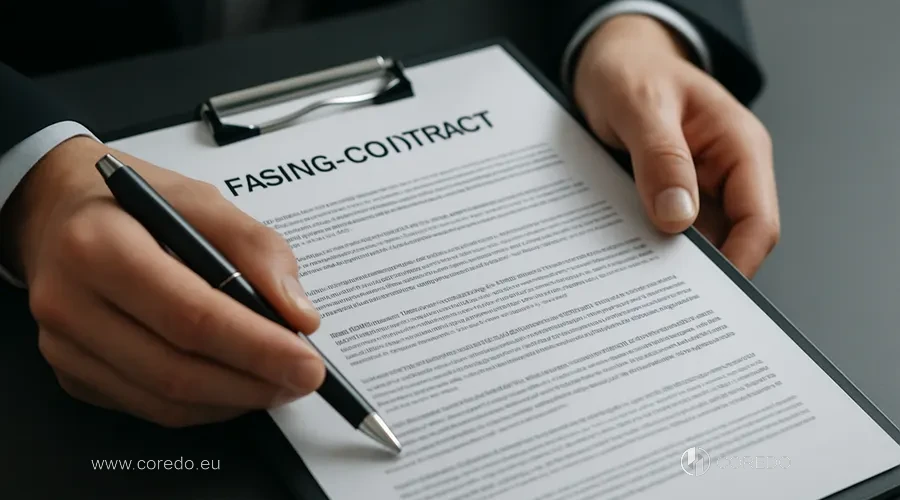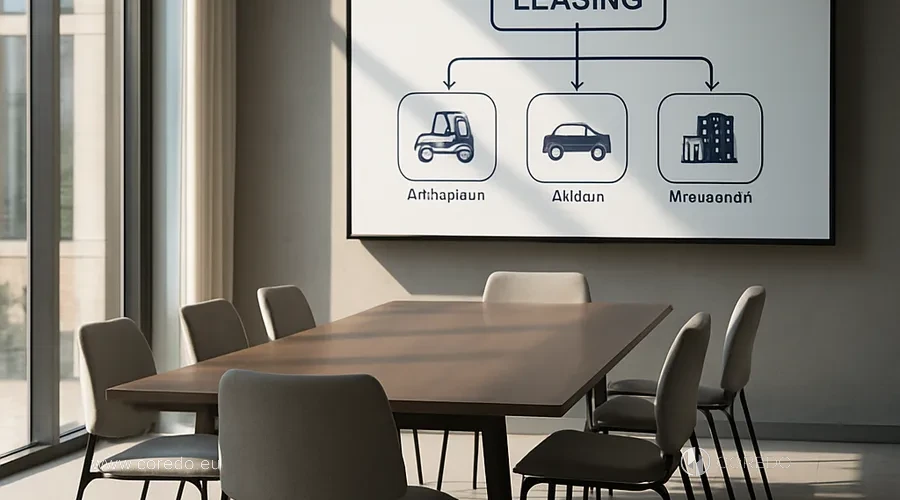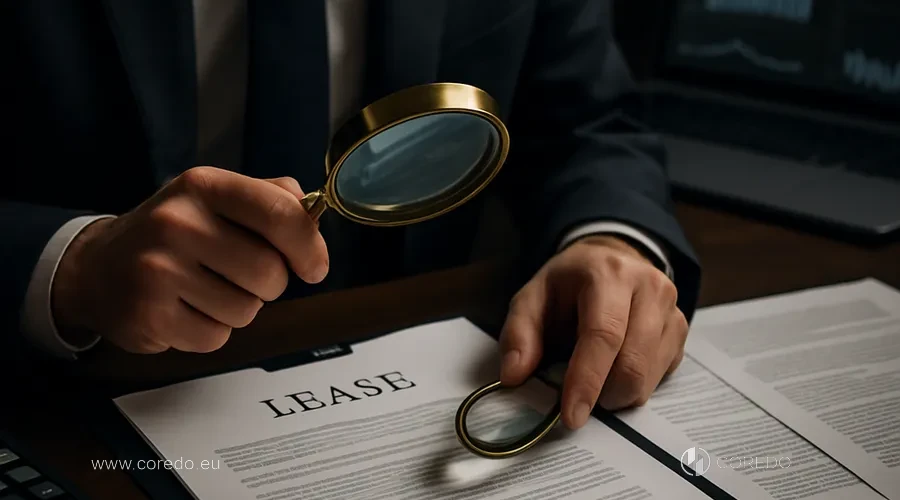Leasing for business today is viewed as one of the most convenient forms of financing the purchase of machinery, vehicles and equipment – without the need to spend large sums upfront and withdraw funds from working capital.
Business leasing – what it is and how it works
Unlike a classic loan, leasing implies that ownership of the leased item remains with the lessor until the end of the agreement, while the lessee receives the right to use it and derive economic benefits.
The transaction structure involves the lessor (leasing company), the lessee (a legal entity, sole proprietor or international company) and, in some cases, the equipment supplier.
For startups in the EU, leasing becomes a real alternative to venture financing, allowing rapid scaling of production capacity without increasing the debt burden.
Thus, leasing opens new financial opportunities for enterprises and contributes to dynamic business development; let’s consider the main advantages of this approach.
Leasing for business: advantages
Leasing for business is not only access to modern assets, but also an effective financial lever. Companies gain the ability to use expensive equipment or vehicles without large one-time investments (CAPEX), converting expenses into operational ones (OPEX).
This is especially relevant for international companies operating across multiple jurisdictions.
Leasing as a business scaling tool enables freeing up working capital, speeding up equipment renewal and responding flexibly to market changes. In conditions of tightening bank lending, leasing becomes a key element of corporate growth strategy.
Types of leasing for business
| Type of leasing | Main features | Who it’s suitable for | Key risks |
|---|---|---|---|
| Financial | Long-term, purchase | Medium and large businesses, international companies | Default risks, residual value |
| Operating | Short-term, return | Startups, small businesses | Risks of property return, wear and tear |
| Buy-back | Buy-back, refinancing | Companies with assets | Legal and tax risks |
Financial leasing — what is it?
Financial leasing implies long-term renting with subsequent purchase of the property at residual value. The transaction structure includes a lease down payment (usually 10–30%), a fixed payment schedule (annuity or differentiated), as well as transaction security in the form of collateral or insurance.
Financial lease agreements pay special attention to early purchase conditions, residual value assessment and mechanisms for managing default risk.
When is operating leasing beneficial?
Operating leasing is a short-term rental with the option to return the asset at the end of the contract term. Unlike financial leasing, there is no purchase obligation here, and lease payments are often lower due to the absence of depreciation of the asset’s full value.
Operating leasing is also in demand in logistics and transport services, especially for cross-border leasing, where requirements for insurance and compliance come to the fore.
Buy-back leasing for business: taxes and refinancing
Buy-back leasing (buy-back) is a mechanism in which a company sells its own asset to a leasing company and immediately leases it back. This approach allows freeing up working capital, optimizing the tax base and refinancing debt.
Leasing terms: requirements and rates

Leasing terms are not only the terms of the deal, but also specific requirements for businesses and sole proprietors, as well as nuances regarding rates and document packages. Understanding these aspects makes it much easier to decide on the feasibility of leasing and to prepare everything necessary for its execution.
Leasing terms for businesses and sole proprietors
Leasing terms for legal entities and sole proprietors vary depending on the jurisdiction, type of asset and the lessee’s credit history. In most EU and Asian countries the minimum down payment is 10–20%, the lease term: from 12 to 60 months, and rates can be fixed or floating.
At the same time, the key factor in deal approval remains the transparency of capital structure and the availability of collateral.
Thus, leasing terms are adapted to the client’s and market’s specifics, which is especially important when choosing the structure and schedule of lease payments.
Structure and schedule of lease payments
Lease payments can be structured on an annuity (equal payments), differentiated (decreasing payments) or seasonal schedule, allowing the financial burden to be adapted to the specifics of the business.
Automation of leasing processes and the introduction of electronic document management enable flexible management of the payment schedule and reduce operating costs.
Asset buyout: price and return
At the end of the lease term, the lessee can exercise the option to buy the asset at its residual value or return the asset to the lessor.
In COREDO cases for international companies, special attention is paid to the legal documentation of buy-back terms and dispute resolution mechanisms when returning assets.
Leasing of equipment, transport and real estate

Leasing of equipment, transport and real estate is a modern financing tool that helps companies renew fixed assets without large one-time expenses. This approach allows businesses to respond flexibly to market changes by investing in the development of production, transport, or commercial real estate without using borrowed capital.
Equipment leasing for business – terms
Equipment leasing is one of the most in-demand tools for the food industry, IT companies and startups in the EU.
COREDO’s experience has shown that for startups in the EU and small businesses in Asia, flexible terms, accelerated depreciation and the ability to replace equipment early without penalties are important.
Transport leasing for business
Transport leasing for business is not only a way to renew a vehicle fleet, but also an effective cross-border leasing tool for international companies.
The COREDO team has supported transport leasing projects with flexible payment schedules and a buy-back option, enabling clients to optimize operating expenses and reduce tax burden.
Real estate leasing – how to use it for growth
Real estate leasing is in demand among IT companies and service businesses opening offices and warehouses in Europe.
COREDO’s practice has shown that real estate leasing allows companies to scale their business flexibly without tying up significant funds in asset purchases.
How to choose a leasing company?

How to choose a leasing company is a key question for any entrepreneur seeking to use modern financing tools profitably and safely. The right choice of a leasing partner will help accelerate business development, avoid unnecessary risks and obtain the best terms of cooperation. In the following points, we will consider what to pay attention to when choosing a leasing company for business.
Now let’s consider the main parameters that will make the choice as well-founded and beneficial for your business as possible.
How to choose a leasing company for business
Choosing a leasing company is a strategic decision that affects the security and efficiency of the transaction.
At COREDO we recommend conducting a comprehensive Due Diligence, including analysis of the leasing portfolio structure, credit scoring and the history of dispute resolution.
AML and KYC in leasing
Modern compliance, AML and KYC requirements are becoming the standard for all leasing operations, especially in the EU, the United Kingdom and Singapore.
COREDO solutions take into account the specifics of AML regulation in different countries and integrate automated control tools into the transaction structure.
Leasing and financial reporting: benefits and standards

Leasing is becoming an increasingly sought-after tool for business, affecting not only asset management but also the structure of a company’s financial reporting. Proper structuring of leasing operations allows taking advantage of significant benefits and requires consideration of modern standards — the following sections are devoted to these issues.
Leasing: tax benefits and optimization
Leasing for business opens access to tax benefits: deductions on lease payments, accelerated depreciation and reduction of the tax base.
COREDO’s experience has shown that tax optimization through leasing requires a deep understanding of local legislation and international accounting standards.
IFRS 16: how it affects financial reporting
Since 2019, all companies reporting under IFRS are required to recognize lease liabilities on the balance sheet (IFRS 16).
In COREDO’s practice, special attention is paid to the correct disclosure of leasing obligations, which helps avoid claims from auditors and regulators.
Leasing for business: risks and legal nuances

Leasing for business is becoming an increasingly popular financing tool, but it is accompanied by a range of risks and complex legal nuances. Understanding them is important to minimize potential losses and properly build relations with the lessor. Below we will consider the main leasing risks and ways to mitigate them within the framework of current legislation and business practice.
Leasing risks and how to reduce them
Key risks: default on lease payments, return of property, force majeure, insurance of leased assets.
Automation of processes and electronic document management reduce the likelihood of errors and speed up response to emergency situations.
Due diligence and lease support
Legal support of leasing transactions is an essential condition for minimizing risks and protecting the parties’ interests.
Different jurisdictions have their own specifics: for example, in Singapore and the United Kingdom separate approval of buy-back terms and compliance control is required at all stages of the transaction.
Leasing for corporate growth and scaling
Leasing for corporate growth and scaling is a tool that allows companies to quickly expand their technical and production base without significant one-time investments. Thanks to flexible terms and effective cash flow management, leasing becomes a powerful driver for business expansion and the implementation of strategic tasks.
Leasing for business: examples and case studies
Leasing for business scaling: it is not only access to financing but also the ability to manage assets flexibly.
For large international companies, leasing becomes part of the corporate strategy for managing leased assets and optimizing capital structure.
What should businesses choose: leasing or a loan?
Comparing leasing and loans requires considering the financing structure, payment schedule, tax benefits, and the impact on financial reporting.
COREDO’s solutions allow you to choose the optimal financing model taking into account industry specifics and business goals.
Practical conclusions and recommendations
- Choose the type of leasing based on business goals, asset structure and tax strategy: financial – for long-term investments; operating – for flexibility; return – for refinancing and tax optimization.
- Evaluate lease terms: down payment, rates, payment schedule, buy-back options and collateral requirements.
- Perform due diligence on the leasing company: rating, experience in the required jurisdiction, level of compliance control.
- Integrate leasing into corporate strategy: use it for scaling, asset management and optimization of cash flows.
- Implement process automation and electronic document management to increase transparency and reduce operational risks.
- Take into account AML and KYC requirements: transparency of capital structure and funding sources is critical for transaction approval in international jurisdictions.
- Use tax incentives and accelerated depreciation to reduce tax burden and improve business efficiency.
Checklist for entrepreneurs and executives:
- Define the leasing objectives and choose the optimal type of transaction.
- Check the reputation and rating of the leasing company.
- Analyze the contract terms: rates, payment schedule, return and purchase options.
- Assess the tax consequences and the impact on financial statements under IFRS 16.
- Conduct legal review and due diligence of the transaction.
- Implement risk management and process automation tools.
- Ensure compliance with all compliance, AML and KYC requirements.
COREDO’s practical experience shows: leasing is not just a financial instrument, but a strategic growth driver when its selection and structuring are approached professionally and systematically.